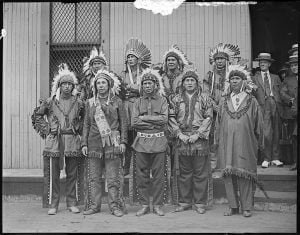Condition of the Maine Indians in 1890
The civilized (self-supporting) Indians of Maine, counted in the general census, number 559 (299 males and 260 females), and are distributed as follows: Aroostook County, 24; Penobscot County, 387; Piscataquis County, 37; Washington County, 89; other counties (9 or less in each), 22. The United States has no dealings with the Indians of Maine as tribes. The Penobscot Indians have their headquarters at Old Town and dwell chiefly along the Penobscot river in the county of the same name. The state of Maine has an agent for them, and the state treasurer reports $11,026.70 paid out on their account in … Read more




